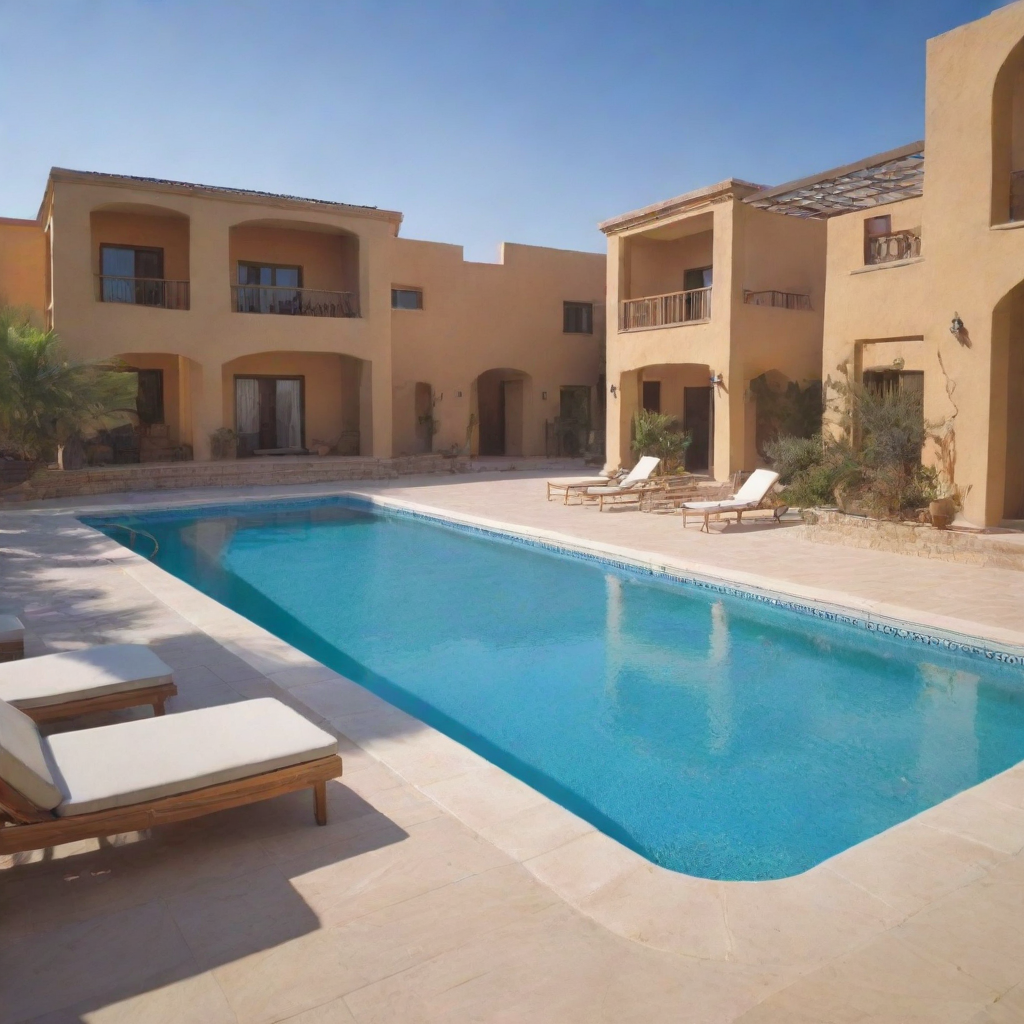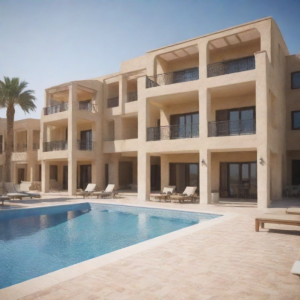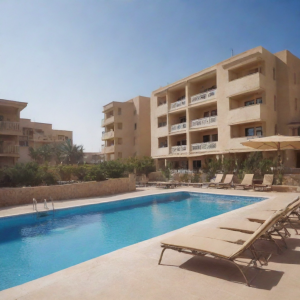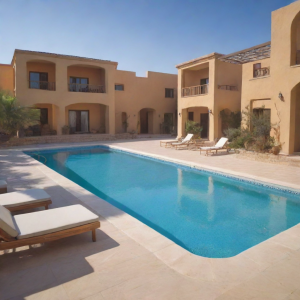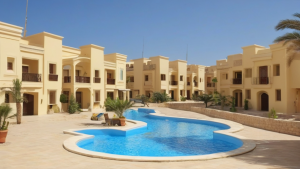Summary about owning and buying property in Hurghada, Egypt.
- Rental yield refers to the return on investment generated from rental income, expressed as a percentage of the property value.
- Additionally, the cost of purchasing property in Hurghada tends to be lower than in many European cities, which means rental income represents a larger proportion relative to property price.
- However, rental yields in Spain generally range from 3% to 6%, which is noticeably lower compared to Hurghada.
- Spain’s property values are much higher, especially in popular tourist and urban centers, which means rental income usually makes up a smaller slice of the overall investment.
- Spain’s real estate market is mature and well-regulated, often leading to more stability but limited upside in rental returns.
Comparing rental yield: Hurghada, Egypt vs. spain
Understanding rental yield in Hurghada, Egypt
Hurghada, located along Egypt’s Red Sea coast, has become a popular destination for both tourists and real estate investors. One of the key drivers making Hurghada attractive is its impressive rental yield. Rental yield refers to the return on investment generated from rental income, expressed as a percentage of the property value. In Hurghada, rental yields often range between 8% to 12%, which is notably high compared to many international markets.
Several factors contribute to Hurghada’s attractive rental yields. First, the city is a well-known holiday hotspot, drawing visitors for its beautiful beaches, diving spots, and year-round warm climate. This consistent demand for short-term vacation rentals provides property owners with a steady stream of income. Additionally, the cost of purchasing property in Hurghada tends to be lower than in many European cities, which means rental income represents a larger proportion relative to property price.
Investors considering Hurghada benefit from a market that is still emerging, with relatively lower competition but growing international interest. Rental properties often include apartments, holiday villas, and beachfront condos, each offering different yield potentials depending on location, amenities, and management.
Spain’s rental market landscape
Spain presents a contrasting but equally interesting opportunity for rental investors. The country boasts a mature real estate market, with cities like Madrid, Barcelona, and coastal hotspots such as Costa del Sol and the Balearic Islands being prime locations for rentals. However, rental yields in Spain generally range from 3% to 6%, which is noticeably lower compared to Hurghada.
This difference can be attributed to several reasons. Spain’s property values are much higher, especially in popular tourist and urban centers, which means rental income usually makes up a smaller slice of the overall investment. Moreover, some parts of Spain have experienced slower rental demand growth or face regulatory constraints on short-term rentals, which can impact potential returns.
Despite the somewhat lower yields, Spain’s established infrastructure, stable political climate, and longstanding popularity among international tourists offer a sense of security and predictability for investors. For those looking for long-term capital appreciation alongside rental income, Spain’s market is often a preferred choice.
Key factors influencing rental yield differences
Investing in Hurghada versus Spain involves weighing key market dynamics that affect rental yield potential. Here are some important considerations:
- Property Prices: Hurghada offers significantly lower entry prices, enabling higher percentage yields for comparable rental income.
- Tourism Volume and Seasonality: Both destinations rely on tourism, but Hurghada’s consistent warm weather supports year-round demand, while Spain experiences more seasonal fluctuations in some regions.
- Market Maturity: Spain’s real estate market is mature and well-regulated, often leading to more stability but limited upside in rental returns.
- Rental Regulations: Spain has more stringent rules regarding short-term holiday rentals, impacting availability and profitability, whereas Hurghada has fewer restrictions.
- Economic and Political Stability: Spain is seen as more stable, which can affect investor confidence, while Egypt’s market carries some risks but also higher reward potential.
Pros and cons of investing in Hurghada rentals
Investing in Hurghada’s rental market can be highly appealing, especially if you prioritize cash flow. Consider these advantages and challenges:
- Pros:
- High rental yields (typically 8-12%)
- Lower property acquisition costs
- Steady tourist demand due to the Red Sea resorts
- Fewer rental restrictions than European markets
- Cons:
- Potential political and economic instability
- Less mature property management infrastructure
- Resale liquidity can be slower compared to Europe
- Currency risk when converting rental income to other currencies
Comparative benefits in spain’s rental market
Spain’s market may not offer the highest rental yield, but it has other strengths worth highlighting:
- Stability and Predictability: Spain has a strong legal system protecting investors and tenants.
- Diverse Rental Types: From urban apartments to countryside villas and beach resorts, Spain’s rental market is diversified.
- Stable Demand: A large domestic population and steady international tourism contribute to reliable occupancy rates.
- Capital Growth Potential: Investments in Spain often benefit from appreciation over time in addition to rental income.
What should investors consider when choosing between Hurghada and spain?
Ultimately, the decision between investing in Hurghada or Spain depends on your financial goals, risk tolerance, and investment horizon. If you’re looking for a higher rental yield with potentially greater short-term cash flow and don’t mind some risk, Hurghada can be a lucrative choice. On the other hand, if you prefer stable returns coupled with long-term capital appreciation in a well-regulated environment, Spain may suit your needs better.
When evaluating rental properties, try to:
- Analyze the local rental demand and occupancy rates
- Factor in additional costs such as property management, maintenance, and taxes
- Understand legal requirements and restrictions on rental properties
- Consider currency fluctuations if you’re dealing with international income
Balancing these considerations will help you choose a market aligned with your investment strategy.
Final thoughts on rental yield comparison
Comparing rental yield between Hurghada, Egypt, and Spain reveals two distinct real estate markets with different risk and reward profiles. Hurghada’s higher yields appeal to investors prioritizing income generation in a growing tourism hub. Meanwhile, Spain offers dependable, albeit lower, rental yields combined with strong legal protections and capital growth potential.
By understanding the nuances of each market, you can make an informed decision that maximizes your rental investment returns based on your personal goals and resources. Whether you lean toward the exotic charm and high yield of Hurghada or the stable, mature environment of Spain, both destinations hold promise for rental property investors seeking steady income streams.
Factors influencing rental yields in Hurghada and spanish real estate markets
Understanding the market dynamics
When comparing rental yields in Hurghada, Egypt, to those in Spain, it’s essential to understand the unique dynamics driving each real estate market. Rental yield, the annual rental income expressed as a percentage of the property’s value, depends heavily on local demand, economic stability, tourism trends, and property prices.
Hurghada, a vibrant resort city on the Red Sea coast, benefits from being a popular destination for tourists seeking sun, diving, and luxury resorts. Spain, on the other hand, features highly diverse real estate markets, from bustling cities like Madrid and Barcelona to coastal hotspots such as Costa del Sol and the Balearic Islands. These differences contribute to distinct rental yield opportunities and risks for investors.
Property prices and affordability
One of the significant factors influencing rental yield in both Hurghada and Spain is the property price level. Hurghada tends to have a lower average property price compared to many Spanish cities or holiday destinations. This affordability can lead to higher rental yields since rental prices, especially during peak tourist seasons, are relatively strong in Hurghada given the demand.
Spain’s real estate prices vary widely, with prime locations typically demanding a premium that suppresses yield percentages. However, in less central or less popular coastal areas, you may find more affordable properties with competitive yield rates. Still, the property cost baseline is generally higher in Spain, which can lower the gross rental yield when compared directly to Hurghada.
Tourism and seasonal demand impact
Tourism plays a massive role in rental income potential, especially for holiday rental properties. Hurghada’s tourism industry remains robust, attracting visitors for water sports, beach vacations, and cultural exploration. This seasonality means rental demand spikes in high season, often driving rental prices upward.
Spain also thrives on tourism, but with a broader variety of attractions spread over its regions, rental demand can be more evenly distributed throughout the year in major cities. Coastal towns see strong seasonal peaks similar to Hurghada. However, Spain’s stricter regulations on short-term rentals in certain areas may affect rental income and yields.
Rental legislation and market stability
Regulatory environments significantly influence rental yields. In Egypt, and specifically Hurghada, regulations around rental properties tend to be more flexible, allowing landlords to capitalize on both long-term and short-term rental markets with fewer restrictions.
Conversely, Spain has implemented a variety of rental laws aimed at protecting tenants. Some cities enforce rent caps and strict licensing for holiday rentals. While this provides tenants with protections, it can limit the upward potential of rental prices, directly impacting rental yields. Investors should carefully consider local legal landscapes before purchasing.
Economic factors and currency considerations
Economic stability and currency risks must also be factored into rental yield calculations. Egypt’s economy has been growing, but it remains more volatile, which can sometimes deter foreign investors despite attractive rental yields.
Spain, as a member of the Eurozone, offers economic and currency stability, attracting investors who value predictable returns. However, this stability often comes with lower yields compared to emerging markets like Hurghada, where higher risk might be balanced with higher reward.
Property management and maintenance costs
Operational expenses can reduce net rental yields, so considering property management and maintenance costs in each location is crucial. Hurghada’s lower labor and maintenance costs can help maintain higher net yields for property owners.
In Spain, maintenance costs can be higher, especially in older buildings or prime locations with strict quality standards. Additionally, property management fees might vary based on location and service level, affecting overall profitability.
Rental yield examples in both markets
- Hurghada: Rental yields can range from 7% to 10%, largely due to high tourist turnover, affordable property prices, and flexible rental regulations.
- Spain: Depending on the region, yields typically range from 4% to 7%. Properties in major cities or exclusive resorts may offer lower yields but with high demand and potential capital appreciation.
Tips for investors assessing rental yields
If you’re considering investing in rental property, analyze the following factors closely to understand the potential rental yield and risks:
- Local demand patterns: Is the area primarily seasonal or year-round rental? Tourist spots like Hurghada offer seasonal demand spikes, whereas cities like Barcelona have steadier year-round renters.
- Legal framework: Understand tenant protection laws and rental restrictions to avoid unexpected constraints on rent setting or lease terms.
- Economic outlook: Consider the political and economic stability of the country to gauge long-term investment security.
- Costs involved: Factor in property taxes, maintenance, insurance, and management fees to calculate net rental yields accurately.
- Currency risk: For foreign investors, fluctuating exchange rates between your local currency and the Egyptian pound or the Euro can impact returns.
Balancing yield with investment goals
Both Hurghada and Spain present compelling rental yield opportunities, but they cater to different investor profiles. Hurghada’s higher rental yields are appealing for investors focused on maximizing cash flow and willing to accept some market risks. Spain’s more stable environment suits those prioritizing capital preservation and steady income, even if yields might be lower.
By considering these influencing factors, you can make a sound judgment on where to invest, aligning with your financial goals, risk tolerance, and interest in property location.
When weighing rental yields between Hurghada, Egypt, and Spain, it’s clear that each market offers unique opportunities influenced by distinct factors. Hurghada stands out for investors seeking higher rental returns, mainly due to its growing popularity as a tourist destination, affordable property prices, and lower entry costs. The appeal of Hurghada’s warm climate, Red Sea access, and year-round tourism drives steady rental demand, boosting yields for buyers.
On the other hand, Spain’s established and diverse real estate market provides a more stable but generally lower rental yield. Cities in Spain, such as Barcelona or Valencia, offer consistent demand from tourists and residents alike, but higher property values often mean smaller percentage returns. Spain’s rental yields are influenced by local regulations, mature infrastructure, and economic factors that offer long-term security combined with moderate growth.
Understanding the forces shaping each market is key. Hurghada’s rental yields benefit from emerging market dynamics, rapid tourist growth, and relatively low property prices, making it attractive to investors ready to embrace some market risks. Spain’s real estate market, while offering lower yields, grants more predictability and legal protections for landlords, appealing to conservative investors.
Ultimately, your choice depends on your investment goals and risk appetite. If you prioritize potentially higher rental income and are comfortable with a developing market, Hurghada may present greater opportunities. Conversely, if you seek steady returns from a well-regulated environment, Spain remains a solid choice. By carefully considering these factors, you can make a more informed decision about where to invest for optimal rental yield.

